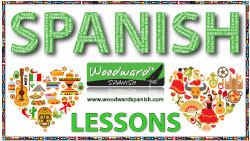Orongo
Easter Island - Rapa Nui
"The whole position is marvellous, surpassing the wildest scenes depicted in romance..."
The Mystery of Easter Island - K. Routledge 1914
Orongo is a ceremonial village perched on the edge of the Rano Kau volcano on Easter Island. It was originally used for just a few weeks of every year (at the beginning of Spring) when the tangata-manu (birdman) competion was being held. The birdman cult is what replaced the sudden demise of the Moai culture and Orongo is the center of this.
The Orongo village contains 54 dwellings made of slabs of stone with a single small entrance at the front. You will notice that they are very low in height and if you wanted to enter, you would have needed to do so on your hands and knees. The reason for this is because the houses were only used for sleeping and the rest of the daily activities took place out the front of it. You will notice that the design of the houses here is similar to the hare-vaka (boat houses) that were commonly seen throughout the island.
What makes Orongo special, apart from the interesting houses, are the large number of petroglyphs found on the rocks inside the village, especially in the ceremonial area.
You will have to pay to enter this village. The ticket costs US$60 ($30.000 Chilean pesos - January 2013) for foreigners. Chilean nationals (and residents) only pay $10.000 pesos with Children under 12 being at half price.
Important: Make sure you keep the entrance ticket you buy here because it will also give you 5 days to enter the Rano Raraku site (where the moais were made) for free.
The Tour of Orongo
NOTE: Please stay on the paths as indicated. On one side there are sheer drops of hundreds of metres down the cliffs into the ocean, and on the other side you have the steep walls dropping into the volcano's crater. But don't worry about these horrible ways of dying... just make sure you stay on the trails. :)
1. First you will come to a lookout where you have a general view of the village, but more importantly you will have a clear view of the two small islands just of the coast where the hopu would have to swim to in order to get to the bird nests with the prized egg. The largest of the two is called Motu Nui and the smaller one a little before it is called Motu Iti.
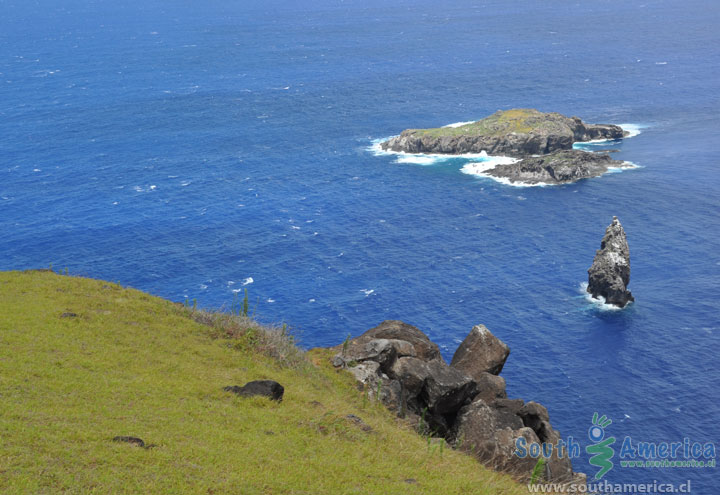
2. You will then see some random piles of stone slabs which belonged to two dwellings that were not rebuilt during the reconstruction of the village between 1974 and 1976. They have been left like that to give you an idea of how the area was before then.
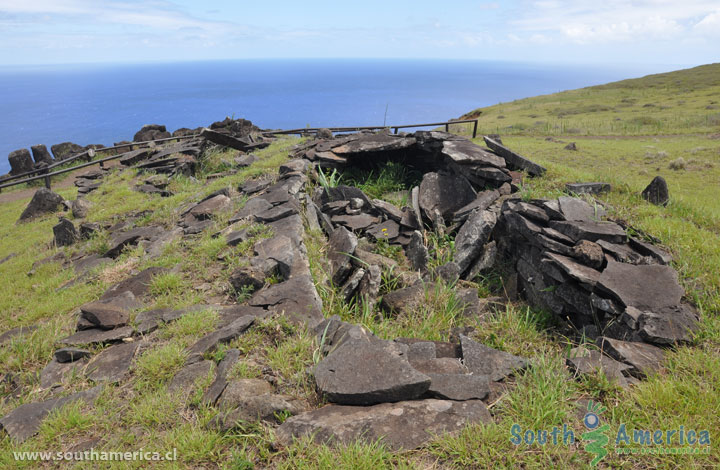
3. Next you will see a house that was only been partly restored. The outer walls are as normal though half of the roof has not been placed on top so that you can see inside and get an idea of what it was like. Notice how it is only a single room / space in elliptical form. Remember, it was only used to sleep in. You can also see that the walls are in fact double walls with earth filled in the middle. The roof is made of progressively overlapping slaps of stone until a large central slab of stone is used to top it off. On top you have earth and grass covering the roof to help protect the inside from the rain and to strengthen the entire roof structure.
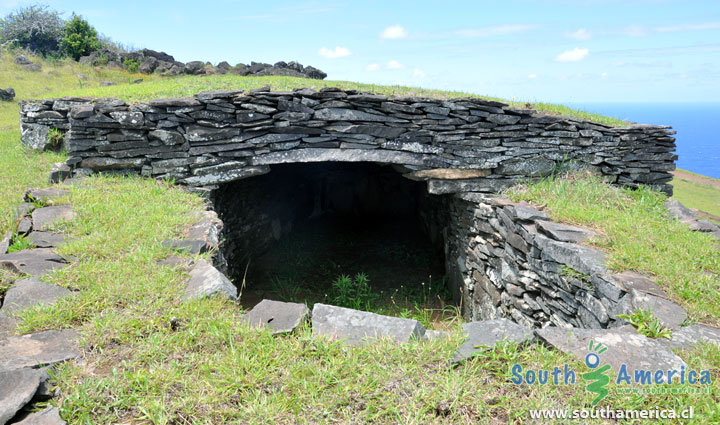
4. Now you will walk before the front of a number of houses. Notice the small entrances to each one and also the "patio" or front yard where most of the social activities took place. Small stone walls were erected between the different houses to show where one property began and ended. This is the place were groups of people from the different tribes would come and sing, dance or do other activities associated with the tangata-manu competition.
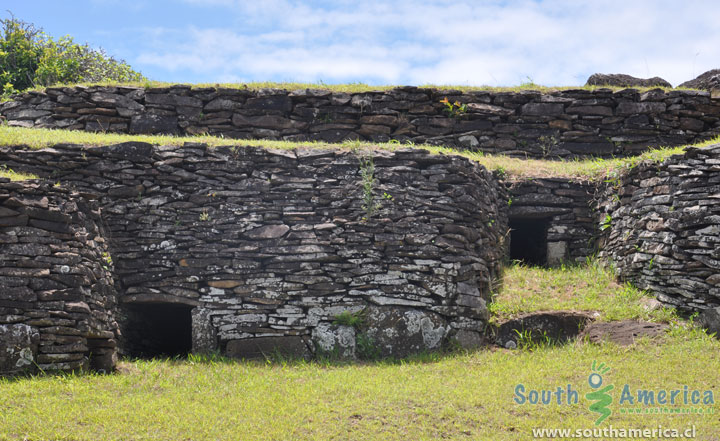
5. One of the houses in this village contained the famous Moai Hoa Haka Nana Ia. It is a basalt moai just 2.5m tall but quite interesting because of the various petroglyphs it has related to the tangata-manu ritual engraved on its back. Unfortunately you will no longer see this Moai here as it is now on display at the British Museum in London after it was taken from this site in 1868.
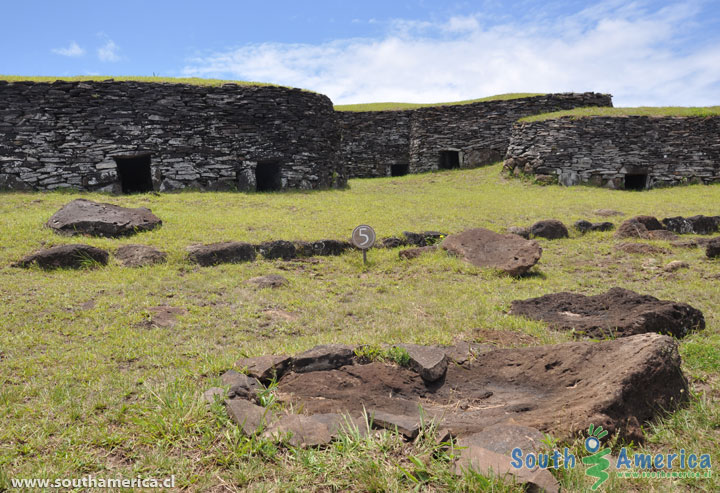
6. As you go past the front of the village and around the side, notice the stepped layout of the houses and how they take advantage of the natural slope of the hill.
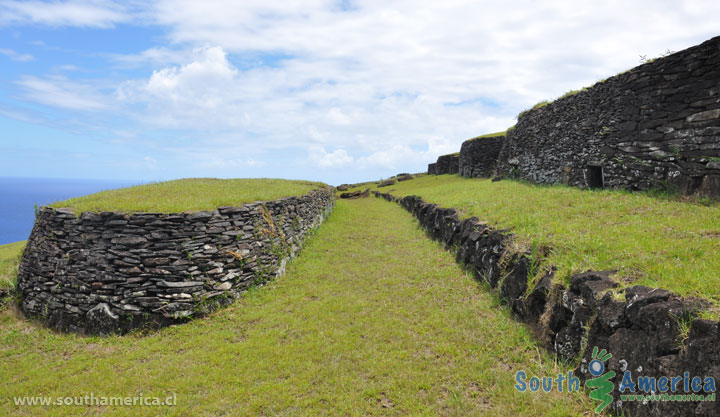
7. The sector with the petroglyphs, called Mata Ngarahu, was the main area for ceremonial activity during the birdman competition. There are hundreds of petroglyphs here though it is now cordoned off and can only been accessed with certain guides (not all). This was the area where the priests would wait for the winner to come back with the prized manutara egg that would end the competition.
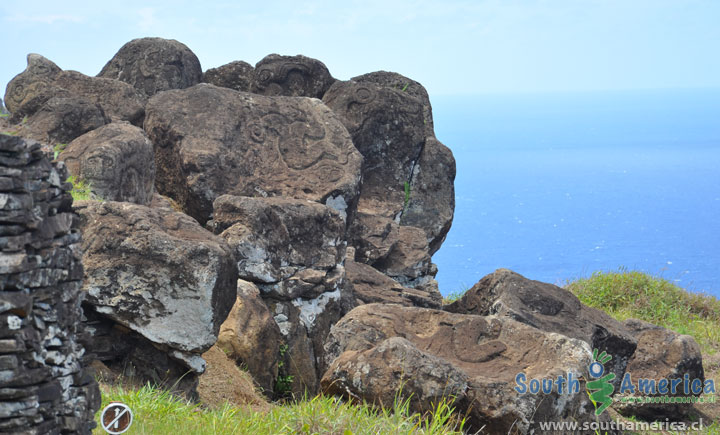
8. This is another view of the Rano Kau volcano.
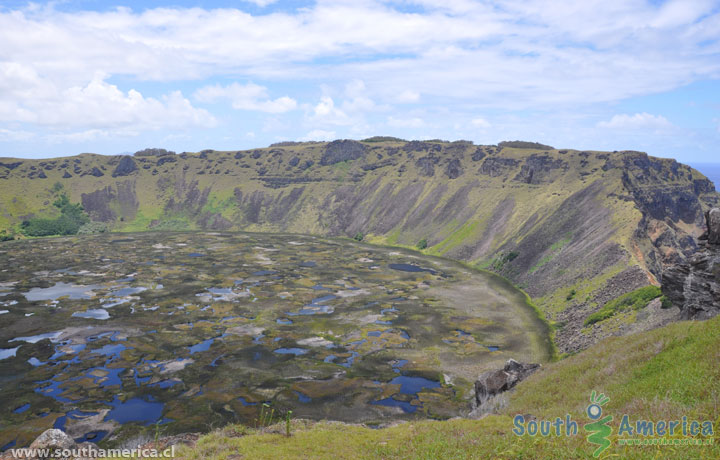
9. After the Rano Kau lookout, you will climb up the gentle slope and see the small quarry where the slabs of stone that were used to build the houses in Orongo village were taken from. As you will have probably already noticed, there are strong winds up here so only stone could be used to build the houses in the village. The traditional straw and totora used in the rest of the island would not have resisted the harsh elements here and would have been blown away.
10. One of the last points you will come across are the remains of an ahu (or shrine) where a Moai once stood.
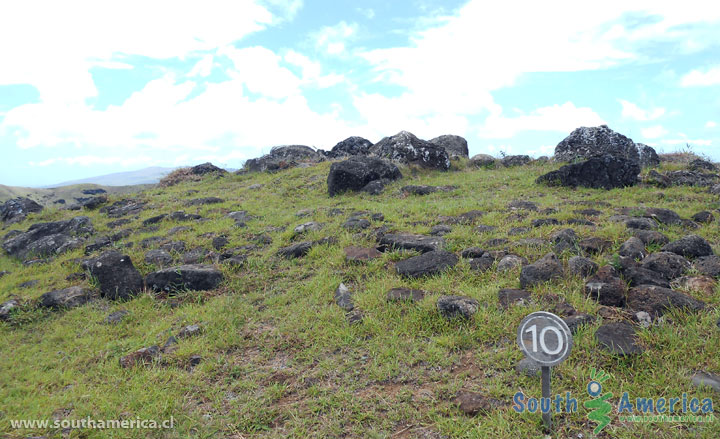
NOTE: Rob W. and Ange P. spent a week on Easter Island at the end of January 2013 to produce most of the information, photos and videos we have here.
Video of Orongo coming soon.
If you found this guide about Orongo on Easter Island interesting or useful, let others know about it.

